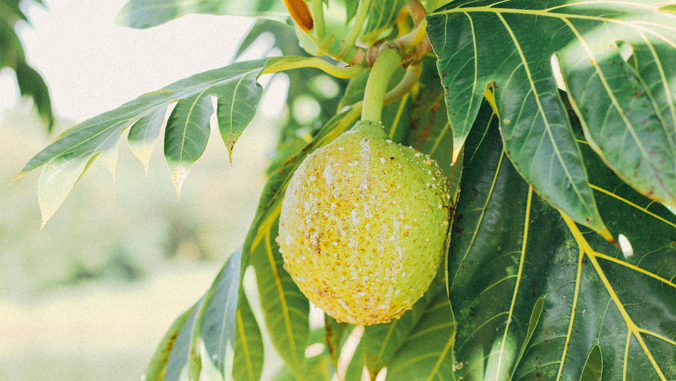
Hawaiʻi Island farmers will be able to find critical data at their fingertips to help them manage their crops and improve yield because of a project involving the University of Hawaiʻi at Mānoa, National Oceanic and Atmospheric Administration (NOAA), National Marine Sanctuaries Foundation and East-West Center.
A new climate dashboard will display weather, climate predictions and environmental conditions relevant to Hawaiʻi Island farmers. The pilot project will co-produce a poly-forestry climate dashboard in partnership with the Keaukaha Panaʻewa Farmers Association on Hawaiʻi Island.
Poly-forestry (“poly” to mean both “many” as well as “Polynesian”) is a traditional Pacific Island system for managing land use that aims to increase the overall yield of the land by combining the productions of crops (including tree crops) and forest plants and/or animals on a given unit of land. The pilot will apply management practices that are culturally compatible with the local population.
The partnership will blend traditional knowledge associated with agroforestry and planting with western science, utilizing NOAA data and climate expertise in order to create a data set for the Panaʻewa Hawaiian Homestead community. Project objectives include:
- Co-produce an agricultural/climate dashboard for the Keaukaha – Panaʻewa area based on the climate prediction for the year;
- Design and create an agroforestry system that is resilient and responsive to the climate and environmental conditions in Panaʻewa; and
- Foster community resilience and food security through agricultural training, education and volunteer opportunities.
This effort relies on NOAA’s vast array of climate-related data, products and services as well as technical and data visualization expertise at UH Mānoa, including that of Jim Potemra, a specialist in the UH Mānoa School of Ocean and Earth Science and Technology (SOEST).
Potemra and John Marra, NOAA Regional Climate Services Director of the Pacific Region, previously developed a climate dashboard for the Pacific to aggregate climate data and information. Later, they connected with a group at UH Hilo to develop an agroforestry site for the Republic of the Marshall Islands where seasonal predictions are displayed to help local planting cycles.
This project is being developed in response to feedback received during a 2021 climate and equity talk story about Equitable Resilience in Light of a Climate Emergency. The dialogues provided NOAA with place-based perspectives and an understanding of what measures need to be taken to ensure that appropriate data and observations are generated, transformed to actionable knowledge, and transmitted in a way that builds the capacity of Hawaiʻi-based agencies, organizations and communities to understand and use climate-related data.
Additional collaborators on this project include Ryan Longman, research fellow at the East-West Center; SOEST graduate student Cherryle Heu and coordinator for the NOAA Pacific Islands Region Collaboration Team Pua Kamaka.

